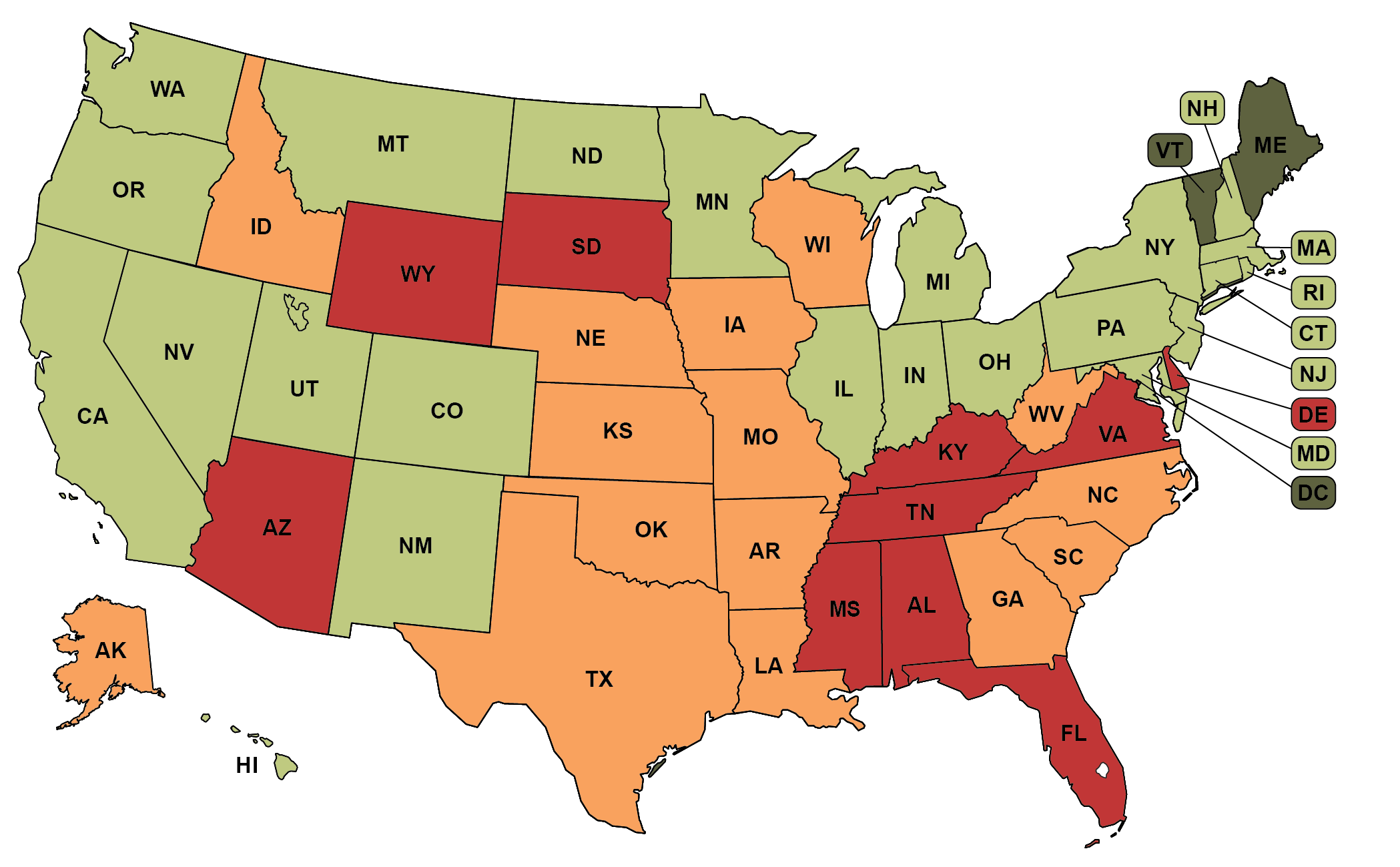Every state has laws outlining who is eligible to vote, and almost all states restrict voting for those who are currently incarcerated for a felony offense—though a few states allow citizens to vote while incarcerated. States differ on when and how formerly incarcerated people can have their voting rights restored.
-
Voting rights are never lost
(2 states + D.C.)
-
Voting rights are automatically restored upon release from incarceration
(23 states)
-
Voting rights are lost until full completion of sentence, including probation and parole
(15 states)
-
Additional action is required post-sentence to restore voting rights
(10 states)
Recommended citation: Movement Advancement Project. "Voting Rights for Formerly Incarcerated People" https://www.mapresearch.org/democracy-maps/voting_rights_for_formerly_incarcerated_people. Accessed [day of access].
Breakdown by Population
*Note: These percentages reflect the voting-eligible population, as reported by the United States Election Project.
1 % of population lives in states where voting rights are never lost
53 % of population lives in states where voting rights are automatically restored upon release from incarceration
27 % of population lives in states where voting rights are lost until full completion of sentence, including probation and parole
19 % of population lives in states where additional action is required post-sentence to restore voting rights


